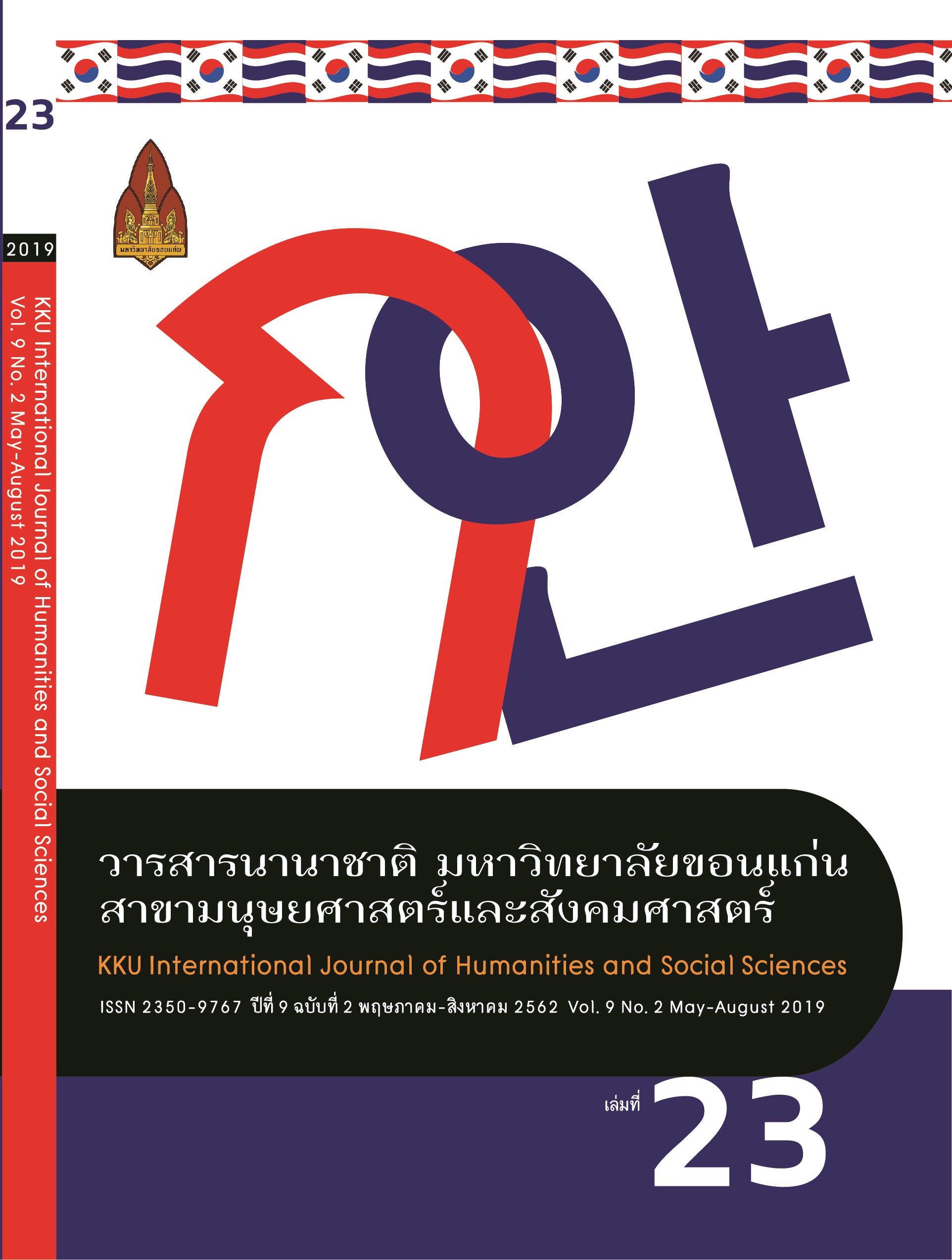Workers' Job Satisfaction in Japanese Companies in Tan Thuan Export Processing Zone in Ho Chi Minh City, Vietnam
Main Article Content
Abstract
The purposes of this study are to examine the satisfaction levels of workers who work in Japanese companies in Tan ThuanEPZ, Ho Chi Minh City and to find the factors, which affect the job satisfaction of workers with job characteristics, salary, benefits, and working environment. The sample size includes 315 workers. Besides, the cronbach alpha and descriptive statisticswere used to analyze the data in this study.
Following the results, we found that most of the workers were satisfied with the high level of items “the job suits your ability”,“the work you are doing is interesting”, “work has no pressure, challenge”, “you feel safe in work”, “salary is at the same level as other Japanese companies”, “the company offers a full of social insurance policy”, “day-off and holiday policy are reasonable”,“you get support from the labor union”, “the company equips fully with labor protection equipment for workers”, “work environment is comfortable”. On the other hand, workers have the low satisfaction level in items “your salary matches the results of your work”, “you live on a company salary”, “the company’s salary and bonus policy are reasonable”. Moreover, the factors of “job characteristics”, “benefits”, “working environment” have a positive effect on job satisfaction of workers; the “salary” factor has not high effect level compared with the three other factors. Although they have a low satisfaction level in factor salary, 81% of workers in the survey still wish to work long term in Japanese enterprises. This study concludes that Japanese businesses should review and adjust the policy of salary to be more reasonable and fair for workers. Job satisfaction research is therefore essential to help companies find ways to retain employees and increase productivity.
Article Details
References
Aziril, B. (2011). Job satisfaction: A literature review. Management research and practice, 3 (4), 77-86.
Davis, R. S. (2012). Unionization and work attitudes: How union commitment influences public sector job satisfaction. Public Administration review, 73 (1), 74-84.
Dung, T. K. (2005). Measuring job satisfaction in Vietnamese conditions. Science and technology Journal, 1, 26-41.
Hai, V. T. T. & Ky, P. D. (2010). Building a model to assess the satisfaction of telephone operators in answering the customers in Vietnam. Post and telecommunications Journal, 12 (1), 35-50.
HEPZA. (2017). Internal Annual Statistical Report. Vietnam: Ho Chi Minh City Export Processing Zone & Industrial Zone Authority.
Hue, B. T. T. (2016). Conflict of interest between employers and employees in Vietnam today. Journal of Vietnamese Social Sciences, 12-14.
Herzberg, F., Mausner, B. & Synderman, B. B. (1959). The motivation to work (2nd ed). London: Chapman and Hall.
Herzberg, F., Mausner, B., & Snyderman, B. B. (1959). The motivation to work. New York: John Wiley & Sons.
Lee, I., & Hwasook, B. (2008). The effect of the working conditions on quality of life. Korean social security studies, 24 (2), 53-80
Lane, K.A., Esser, J., Holte, B., McCusker M. A. (2010). A study of nurse faculty job satisfaction in community college in Florida. Teaching and Learning in nurse, 5, 16-26.
Luddy, N. (2005). Job satisfaction among employees at a public Health Institution in the Western Cape, University of the Western Cape.
Kim, S, (2009). IT employee job satisfaction in the public sector. International Journal of research in economics & social sciences, 1 (2), 11-24.
Kathawala, Y., Moore, J. K. & Emulti, D. (1990). Preference between Salary or Job Security Increase, International Journal of Manpower, 11(7), 25-31.
Yunuk K., Kevin J. M., & Dean, E. (1990). Reference between Salary or Job security increase. International of Manpower, 11 (7), 15-21.
Kreitner, R. and Kinicki, A. (2007). Organizational behavior. McGraw-Hill Irwin.
Maslow, A. H. (1943). Maslow Hierarchy of Needs Theory. Retrieved from
https://kalyan-city.blogspot.com/2010/06maslow-hierarchy-of-needs-theory-of.html
Ninh, A. N. (2008). Trends of Vietnamese workers today. Vietnam: National political Publisher.
Nhuan, L. T. & Linh L. C. (2009). Develop a tool for measuring employees’ job satisfaction. Public Medical Journal, 11, 18-33.
Nunnally, J.C., & Bernstein, I. H. (1994). Psychometric theory (3rd ed.). NewYork: McGraw-Hill
Spector, P. E. (1997). Job satisfaction: application, assessment, causes, and consequences. Thousand Oaks, CA: Sage publications, Inc.
St. Lifer, E. (1994). Career survey, job satisfaction, are you happy in your jobs? Exclusive report. Library Journal, 119 (18), 44-49.
Smith, P.E., Kendall, L. M. and Hulin, C. L. (1969). The measurement of satisfaction in work and retirement. Rand McNally: Chicago, IL. USA.
Smith el al (1983). Organizational citizenship behavior: Its nature and antecedent. Journal of applied psychology, 68, 653-663.
Son, L.N. (2005). Measurement of job satisfaction level of employees at Longan Mechanical Joint Stock Company. Master Thesis, Ho Chi Minh city University of Economic, Hochiminh, Vietnam.
Thuy, N. T. T. (2011). Research on factors affecting job satisfaction of lecturers in Ho Chi Minh city. Master thesis. Ho Chi Minh University of economics, Vietnam.
Thuan, N.V (2011). Job satisfaction of lecturers: Access to administrative behavior. Danang University Science and Technology Journal, 45-50.
Tuyet, Y. T. P. (2010). Gender – Work and Family life. Vietnam: Social science Publisher.
Wang, H. M. & Feng, W. W (2003). Review on employee job satisfaction. Commercial Research in China, 9, 43-54.
Wright, T. A. & Bonett, D. G. (2007). Job satisfaction and psychological well-being as non-additive predictors of workplace turnover. Journal of management, 33, 141-60.
Westover, J. H. Westover, A. R. & Westover, A. L. (2010). Enhancing long-term worker productivity and performance: The connection of key work domains to job performance management. International journal of productivity and performance management, 59 (4), 372-387.


